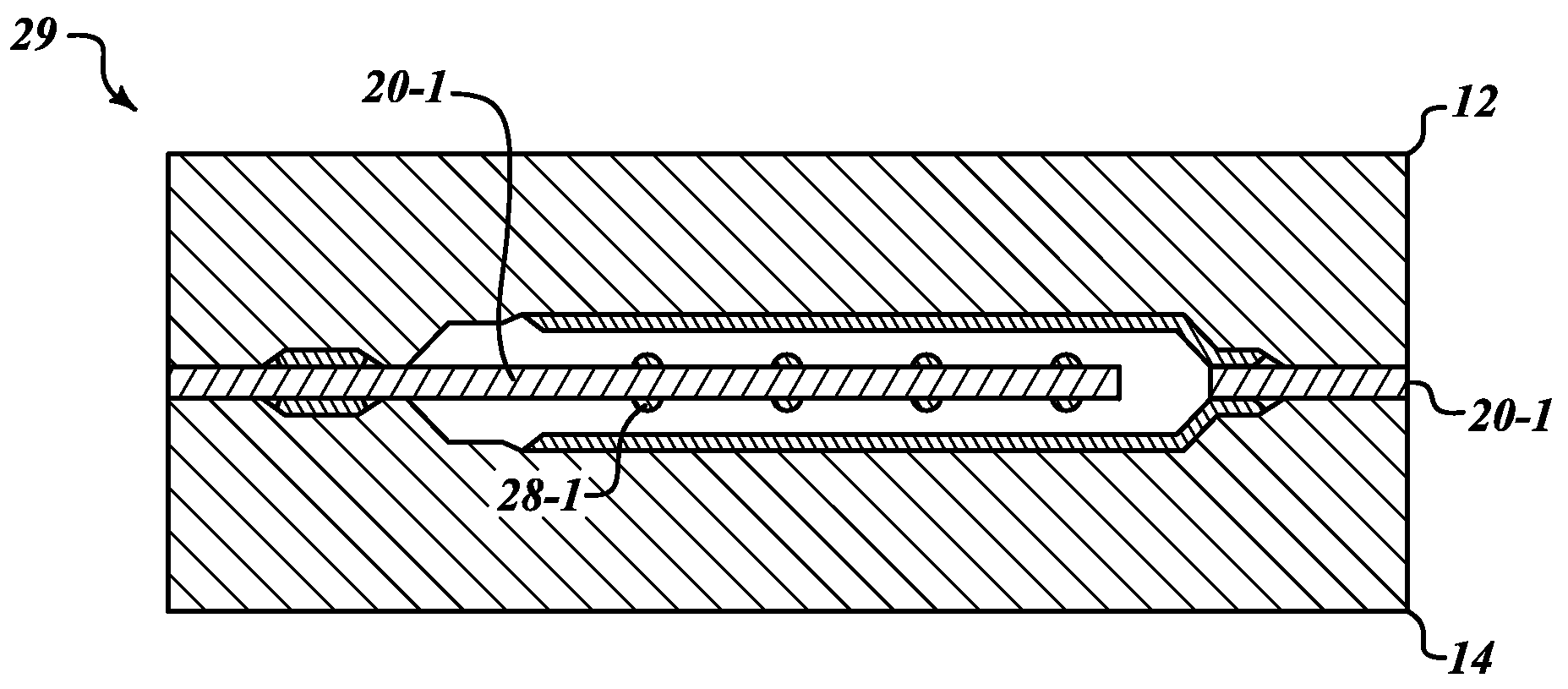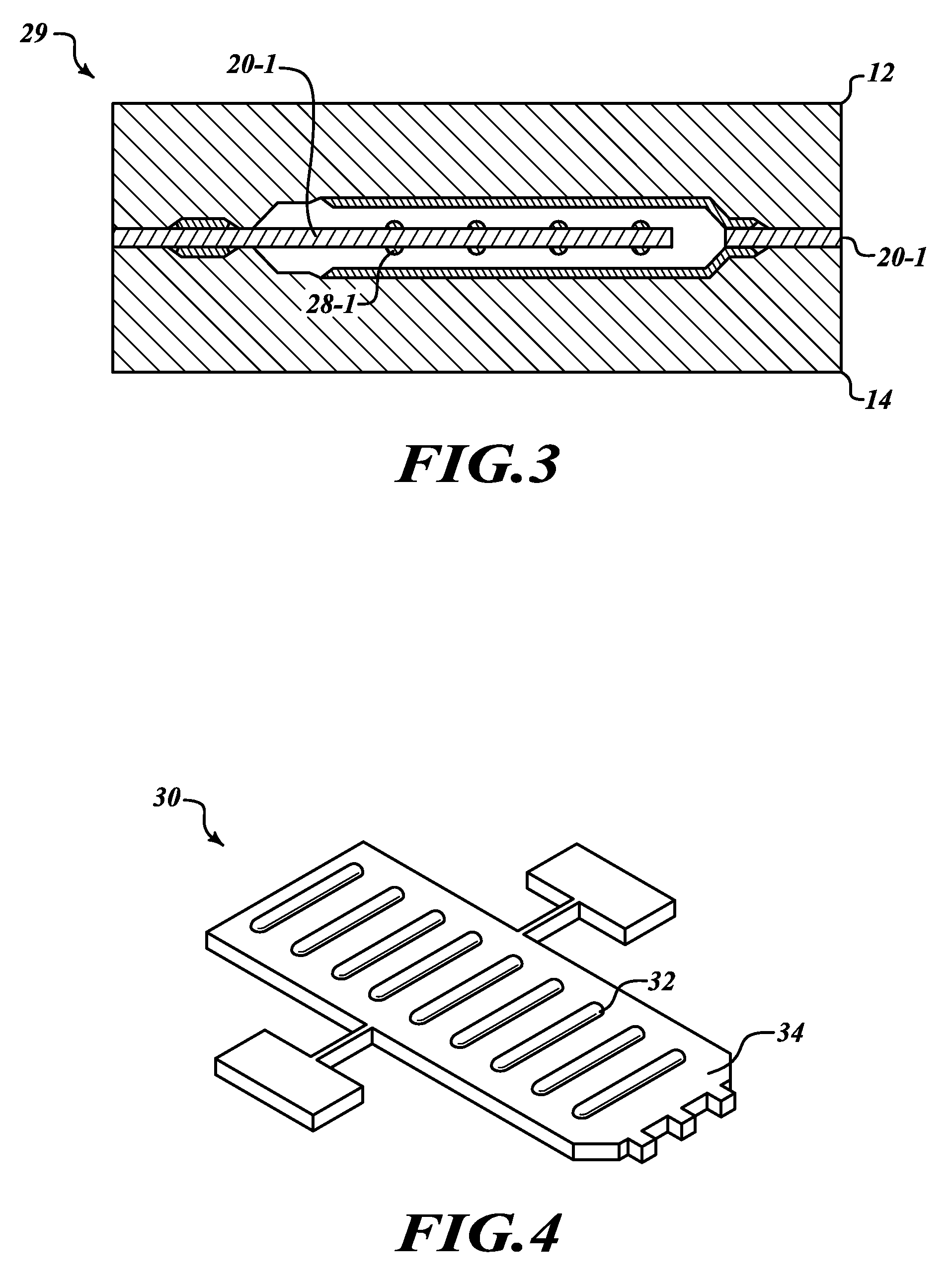Systems and methods for stiction reduction in MEMS devices
a technology of mems devices and stiction reduction, which is applied in the direction of semiconductor devices, semiconductor/solid-state device details, electrical apparatus, etc., can solve the problems of unusable mems devices and unusable electrostatic effects, and achieve the effects of preventing stiction, preventing stiction, and improving the production yield of sensitive mems devices
- Summary
- Abstract
- Description
- Claims
- Application Information
AI Technical Summary
Benefits of technology
Problems solved by technology
Method used
Image
Examples
Embodiment Construction
[0019]The present invention provides systems and methods for reducing stiction between elements of a microelectromechanical systems (MEMS) sensor or actuator device during anodic bonding. FIG. 1 illustrates a MEMS device 10 in accordance with an embodiment of the present invention. The components of the MEMS device 10 include: an upper substrate cover 12, a lower substrate cover 14, an upper conductor 16, a lower conductor 18, a sensing or actuating element 20 in a device layer 22, an upper anchor 24, a lower anchor 26, and one or more antistiction elements 28.
[0020]During fabrication of the MEMS device 10, the lower substrate cover 14 can be configured to include a lower conductor 18 that resides on an interior surface of the lower substrate cover 14. In an embodiment, the lower conductor 18 includes the antistiction elements 28. In accordance with a first bonding process, a single wafer substrate that includes the sensing or actuating element 20 in the device layer 22 are bonded t...
PUM
 Login to View More
Login to View More Abstract
Description
Claims
Application Information
 Login to View More
Login to View More - R&D
- Intellectual Property
- Life Sciences
- Materials
- Tech Scout
- Unparalleled Data Quality
- Higher Quality Content
- 60% Fewer Hallucinations
Browse by: Latest US Patents, China's latest patents, Technical Efficacy Thesaurus, Application Domain, Technology Topic, Popular Technical Reports.
© 2025 PatSnap. All rights reserved.Legal|Privacy policy|Modern Slavery Act Transparency Statement|Sitemap|About US| Contact US: help@patsnap.com



